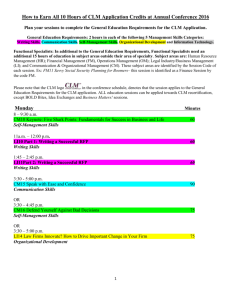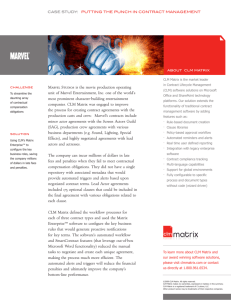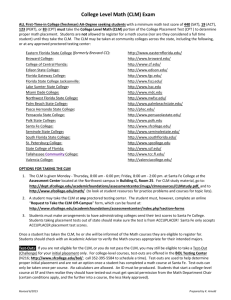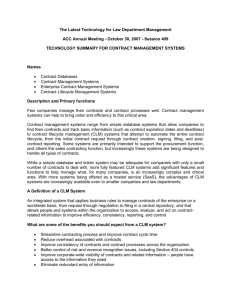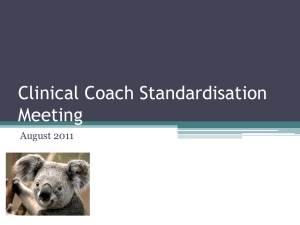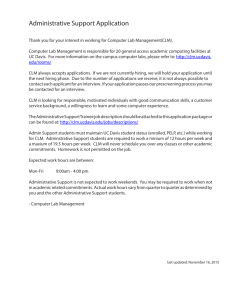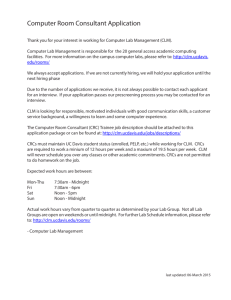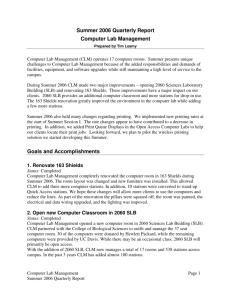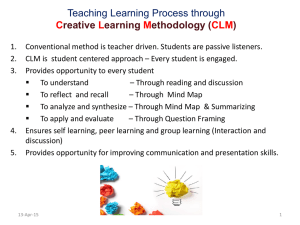Competent Learner Model
advertisement
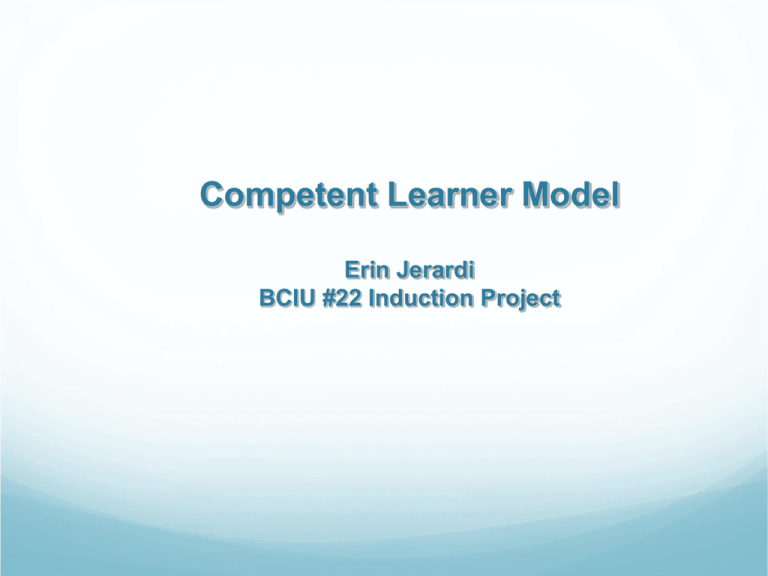
Competent Learner Model Erin Jerardi BCIU #22 Induction Project Project Description ABA/VB Classroom in Palisades School District Added to the Competent Learner Model Project To examine how to ease the change of the autistic support classroom to improve student success and decrease teacher/staff anxiety in the process. Competent Learner Model Goal of CLM: To implement effective and sustainable educational programs for children with challenging learning problems in a multi-component package for addressing the individual learning needs of students who have difficulty participating in typical learning environments Competent Learner Model Effective Applied Behavior Analysis (ABA) Analysis of Verbal Behavior Direct Instruction Precision Teaching Competent Learner Model Curriculum Sustainable Learner assessments Competent Learner Repertoire Assessment (CLRA) CLM Placement Test Effective teaching strategies Staff training Course of Study Coaching Collaborative consultation On-site Coaching Provides: A partner for problem-solving through PaTTAN external CLM coach, internal BCIU CLM coach, Classroom Special Education Teacher, Instructional Assistants, Related Service Providers (Speech, OT, PT) Successful implementation of the model in the classroom Assistance in assessing and developing programs for learners Demonstration of instructional techniques CLM Scope and Sequence The Seven CLM Repertoires Talker Listener Observer Reader Problem Solver Writer Participator Instructional Conditions Non-Directed independent work or play Semi-Directed instructor is close by in case help is needed Teacher-Directed instructor is leading the lesson Peer-Directed students are working or playing together What will a CLM lesson look like? What to Teach Talker, Observer, Listener, Problem Solver, Reader, Writer, Participator Where to Teach Teacher-directed, Semi-directed, Peer-directed, and Nondirected How to Teach Curriculum, Instructional Materials, Physical Structure and Teacher Delivery Impact to Student Achievement Participation Skills: CLM made us ask the question, “What can they do without us being in close contact?” We taught the students to not only engage in one-on-one learning environments, but also small group and individual learning sessions. Students were directed using the district curriculum and Direct Instruction. Students were included with general education students with an instructional assistant who worked to fade back as much as possible. Manding: Students were taught to request for items and actions they wanted and needed, but they were also taught that they may need to wait for those items/ actions at times. Personal Growth: Trust the Process! This experience has taught me how to embrace a new classroom model that I did not fully understand in the beginning. I learned to “trust the process” and work with staff members to do the same. Follow instructions with in the curriculum, consult with PaTTAN coaches, BCIU coaches, and other CLM teachers to problem solve. Expansion of Project I think it would be valuable for a new teacher or coach, to see what we have done in the classroom in Springfield elementary School. The classroom was transferred from a strict ABA-VB classroom to a Autistic Support Classroom meeting the needs of it’s students in the most appropriate way possible: by meeting them right where they are.


